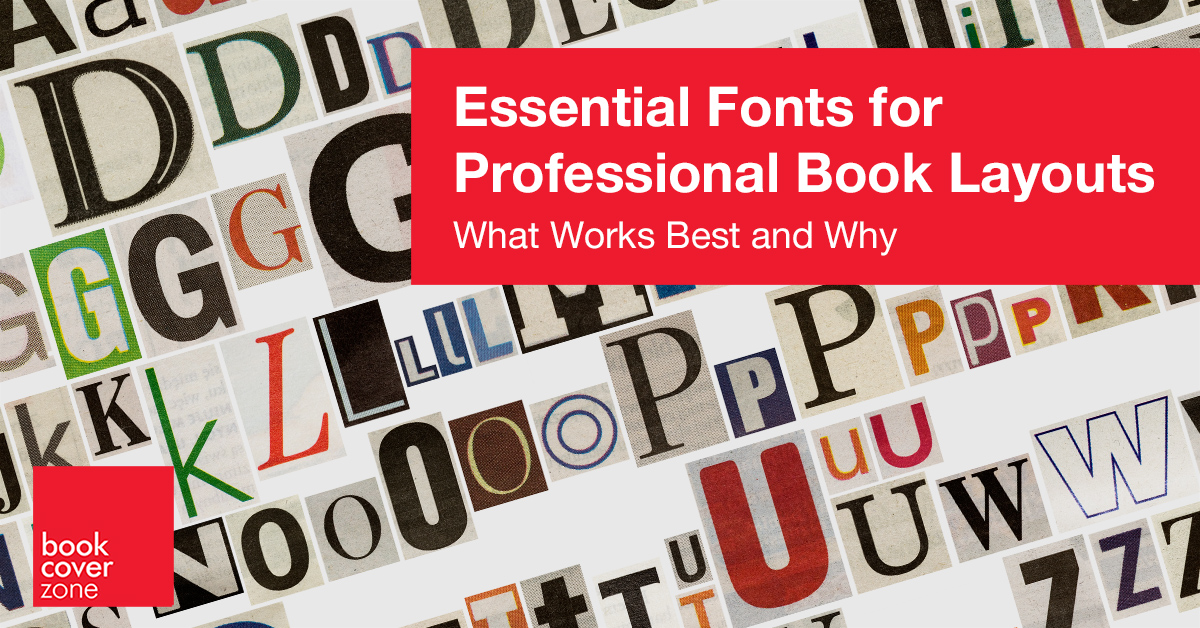In the realm of book publishing, the choice of font transcends mere aesthetics. It significantly impacts readability, sets the mood, and can even influence the physical cost of publishing a book. Professional publishers often deliberate over font selection, choosing those that best align with the book’s genre, audience, and design needs. Today, we’ll delve into 10 exemplary sans-serif fonts and 5 exemplary serif fonts, discussing their unique qualities and why they are preferred by publishers for various book layouts.
What to Pay Attention to When Selecting a Typeface
Legibility and Readability: The main goal is to facilitate an effortless reading experience. Serif fonts like Garamond and Minion Pro guide the reader’s eye along lines of text, while sans-serif fonts like Arial and Calibri offer simplicity and modernity that help with scanning and quick reading.
Mood and Tone: Fonts carry intrinsic personalities. For instance, Baskerville might convey authority and tradition, suitable for historical texts, whereas Futura might evoke modernity and cleanliness, ideal for tech subjects.
Physical and Economic Efficiency: Some fonts, particularly serifs like Times New Roman, are space-efficient, which can significantly reduce the number of pages needed for printing, thereby lowering production costs.
Through careful selection of typography, publishers enhance the reader’s engagement, ensure aesthetic alignment with the content’s theme, and manage their production resources wisely. Each font choice is a reflection of strategic design thinking aimed at creating a seamless and immersive reading experience.
Favorite Serif Fonts in Publishing
- Garamond: Renowned for its elegance and readability, Garamond is a top choice for lengthy texts in novels and historical books.
- Baskerville: Known for its sharp, crisp style, Baskerville lends an air of formality and credibility, suitable for academic works and established literature.
- Caslon: Old-style yet versatile, Caslon is famous for its character and reliability, particularly effective in body text for conveying a classic aesthetic.
- Times New Roman: While rejected by many designers due to it’s universal accessibility and rather generic style, Times New Roman is still worth considering for a variety of reasons. Known for its compact and economical style, makes it ideal for newspapers and academically oriented books. It’s also well-balanced and easy on the eye.
- Palatino: Designed to be easy on the eyes, Palatino works well for both text and headings, often used in both fiction and non-fiction books.
- Georgia: Specifically designed for clarity on screen, Georgia is also excellent in print, with a robust, modern look suitable for business or educational publications.
- Bodoni: Characterized by its dramatic contrast of thick and thin lines, Bodoni is preferred for artistic books and magazines where style makes a statement.
- Bookman: Evoking warmth and reliability, Bookman is often used in trade settings for both fiction and non-fiction that require a traditional feel.
- Tiffany: Offering a refined grace, Tiffany is versatile for both body text and headers, particularly used in books that seek a sophisticated vibe.
- Adobe Garamond Pro: A modern take on the classic Garamond that is particularly well-suited for extended texts in older and classic publications.
- Sabon: Known for its beautiful clarity and ample letter spacing, Sabon is fantastic for a smooth reading experience in high-end fiction and non-fiction.
- Minion: Minion is versatile and clean, designed for new-age prints where readability and elegance are required.
- Perpetua: With its tall and elegant letterforms, it is often used in formal books and works well in scientific and philosophical texts.
- Centaur: Modeled after Renaissance-period typography, Centaur brings a touch of artistry, suitable for poetry and upscale works.
- Goudy Old Style: Its gentle curves and moderate contrast make it an excellent choice for various texts offering a humanist warmth.
Top 5 Sans-Serif Fonts Used by Publishers
- Helvetica: Celebrated for its neutrality, Helvetica is incredibly versatile, used widely from technical manuals to contemporary literature.
- Calibri: As the modern standard for Office applications, Calibri’s soft round shapes make it comfortable for readers in both digital and print formats.
- Arial: A staple in the sans-serif family, Arial’s clean and legible appearance makes it a safe choice for titles and marketing materials.
- Futura: With its geometric shapes and even weight, Futura offers a modernistic look, perfect for sci-fi and academic books.
- Gill Sans: Known for its humanistic style and clarity, Gill Sans is often used in children’s books and casual publications for a friendly appearance.
Combining Serif and Sans-Serif Fonts
Using serif fonts for body text and sans-serif fonts for headings or captions can create a dynamic layout that enhances readability and visual appeal. The serif’s traditional ‘feet’ guide the eye along lines of text, making lengthy passages easier to navigate, while sans-serif fonts offer clean and straightforward headings that capture attention. Applying this combination is particularly useful in textbooks, cookbooks, and manuals, where distinguishing between different sections easily is crucial.
To sum it up…
The judicious choice and combination of fonts are fundamental in book design, significantly affecting a publication’s market success. By selecting appropriate serif and sans-serif fonts and using them conjointly, publishers not only ensure a book’s aesthetic and readability but also augment its marketability and reader engagement. As subtle as these choices may seem, they are paramount in the competitive world of book publishing.
